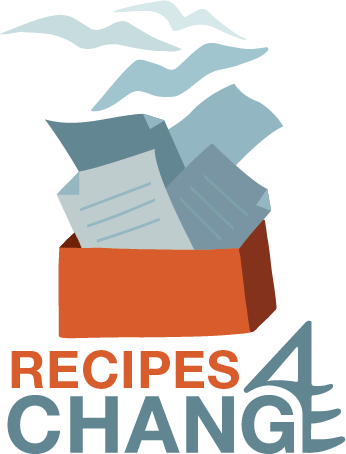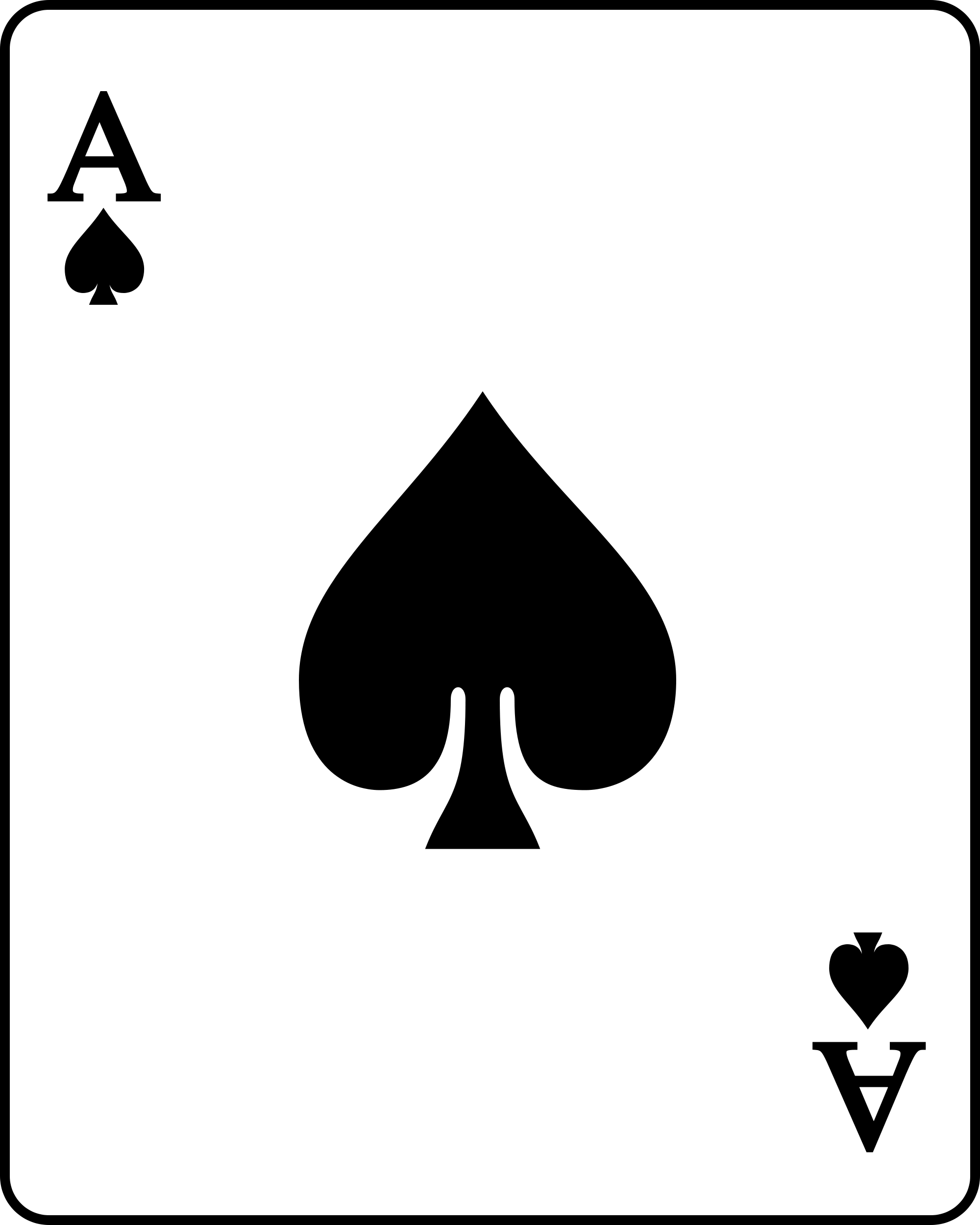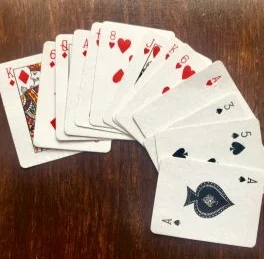What Out-dated Story Are You Still Living By Today?
What out-dated story are you still living by today?
Are you aware of it, and it’s impacts on your life?
Would you like to bring it to your awareness?
After all, you can’t change what you are not aware exists in the first place.
“It’s like everyone tells a story about themselves inside their own head. Always. All the time. That story makes you what you are. We build ourselves out of that story.”
- Patrick Rothfuss, American author.
Those who know me might also know that I am mixed. My mum was from Ghana and my dad from Lebanon. I was the intersection between an African and an Arab, a Catholic and a Muslim. I was baptised as a baby then when a toddler was raised in a Muslim household.
My parents divorced before I was two years old. The circumstances then meant that I was shuffled around between carers and homes until I arrived, in the sixties, at the doorsteps of my Lebanese grandmother in Tripoli, Lebanon.
Not many people looked like me in those days. I was one of two black pupils in the whole school. The result was being subjected to discrimination and racism during the most impressionable years of my life. My brown skin became a reason to dislike me, reject me, call me names, poke fun at me, ignore me, or treat me with total inconsideration.
It is no wonder that the combination of the unsettled early years and having to face those biases led me to make the decision that I was not good enough, and that I needed to try hard to earn people’s love.
When you tell yourself a story long enough, you believe it and it impacts all your life choices.
That was the story that I lived by for most of my teen and young adult years and it did negatively impact my personal and professional life. I experienced a crisis in my thirties, had a breakdown, and got myself some much needed help in the form of coaching and counselling. That was the moment when things started to change.
It was only then, in those therapeutic sessions, that I started to bring aspects of this old, out-dated story into my awareness. I started challenging its truth, and questioned its validity. Only then life began to slowly change, and I started first to love myself and then allow the love of others to flow into my life. Only then I began to experience joy and fulfilment, which spread around me and engulfed everyone in my world.
“There is a surrendering to your story and then a knowing that you don’t have to stay in your story.”
- Colette Baron-Reid, Intuitive Counsellor
I observe a similar, yet unique experience, in my clients. I see how many of them are also still living according to an old, out-dated story. I witness how they carry heavily within them the limiting decisions and beliefs that they formed decades ago. The story that brought some comfort years ago is now the cause of so much discomfort because it is thwarting their chances of a happy and successful life.
The out-dated story could be stopping you from going after that promotion, or acing that interview, from speaking up and sharing your ideas during work meetings, or starting a relationship. It could be the reason you focus on the needs of others and neglect your own. The reason you can’t say no and try hard to meet the demands of others. The reason you are afraid to show your emotions and your vulnerability. The reason you strive for perfection and fear making mistakes.
My clients and I work together so they can become fully aware of the old story. This allows them to re-examine those decisions, and choose when and how to let this old story go, make new choices and live according to a changed and more authentic story.
What about you?
Are you still holding on to an out-dated story?
Would you like to bring it to your awareness?
Let’s talk.
The Secret To Happy Relationships
I have been preoccupied the past couple of weeks with the wedding of my daughter, who got married on the 4th of June. I took a break from all other activities in order to be fully present with her, close family members and friends, on this special occasion. We had a beautiful and joyful day. Luckily I had been practicing my ‘one leg’ dance (check previous posts) as we ended up performing it later that evening 😃.
In the run up to the wedding day my daughter asked me this question:
“What is the secret to a happy relationship?”
My answer without any hesitation was:
“The secret to a happy relationship with another, is to have a happy and healthy relationship with yourself first.”
I truly believe in the importance of having a healthy relationship with yourself before you can have a healthy relationship with others. I also believe that this applies not only to romantic relationships but all other relationships too. This is what my life experience has revealed to me and what I later learnt when I studied human behaviour and personality.
When you have a healthy relationship with yourself:
✔ You take responsibility for your own behaviours instead of carrying the blame for everyone else’s.
✔ You do not entertain the fantasy that you can fix everything and everyone, and recognise that you can only manage and bring about change in yourself. This in turn will most probably lead to changes in your environment.
✔ You will not always neglect yourself and put others’ needs above your own, and then feel resentful because they do not follow suit. Instead you will recognise that to give to others you need to give to yourself first.
✔ You will not say yes when you actually want to say no, then feel overwhelmed and have a sense of failure because ultimately you are unable to meet all those demands you have put on yourself.
✔ You will not feel constantly anxious, agitated and on shaky ground, due to self-doubt, and instead feel secure, confident and grounded with your sense of self-worth.
✔ You will speak to and treat yourself with the same kindness and compassion that you show others.
✔ Having a healthy relationship with yourself means that when you disagree with another you manage the situation with the ability to still show love, kindness and respect.
✔ When you have a healthy relationship with yourself you will know that you are good enough.
From this vantage point every other relationship you form, will be healthier and happier, and if it is not, then you will spot the signs early on, and have the awareness and self-worth to intervene early on, and take steps to exit a toxic relationship or set boundaries that protect you from harm.
“every time I meet more of myself
i can know and love more of you”
- Yung Pueblo, poet and philosopher
What do you think is the secret to healthy and happy relationships? Please share your insights in the comments.
Can a simple card game teach you something about your relationships?
During my second module, studying Transactional Analysis at TA Works with Rosemary Napper, I learnt about Strokes. This newly acquired knowledge gave me so much insight into the way we conduct our relationships with others and with ourselves.
During my second module, studying Transactional Analysis at TA Works with Rosemary Napper, I learnt about Strokes. This newly acquired knowledge gave me so much insight into the way we conduct our relationships with others and with ourselves.
So what are ‘Strokes’ exactly?
Eric Berne defined a stroke as a unit of human recognition. The word stroke came about after Rene Spitz observed through a study he conducted that infants reared with a lot of physical stimulation fared better than infants who were deprived of such stimulation. The word ‘stroke’ refers to an infant’s need for physical stimulation. As grown ups we still crave such physical stimulation but we learn to substitute other forms of recognition in place of the physical. Therefore, a stroke can be a smile or a frown, a nod, a look, a hand gesture, a spoken word, a compliment, or a touch. As humans, we desperately seek strokes from others. Berne called this need “Stroke Hunger.” Hence, we do what we do in life in order to be stroked and we learn about ourselves from the strokes that we get.
Types of Strokes
Strokes can be positive, experienced by the person receiving them as pleasant or pleasurable. Strokes can also be negative, experienced as being painful. A stroke can be verbal or non-verbal. A smile is a non-verbal stroke, but saying to someone, “Have a good day” is a verbal stroke.
Strokes can also be unconditional or conditional. Unconditional strokes are those directed at what you are, your being. Conditional strokes are those directed at what you do or accomplish. When you say, “I love you” to your son/daughter you provide him/her with an unconditional stroke. When your child wins a race at the school sports day and you shout,” Well Done!” you are providing him/her with a conditional stroke because you are referring to something they have done or accomplished.
Unconditional strokes are a very rich kind of strokes and children who grow up in an environment where they receive a lot of positive unconditional strokes really thrive. The same is also observed with adults who receive a lot of positive unconditional strokes. On the other hand, negative unconditional strokes are extremely harmful since they convey the message that the recipient is not OK. If a person is subjected repeatedly to such a pattern of strokes early in childhood, he/she can end up with a negative impression of self and can have low self-esteem and self worth.
Conditional positive strokes recognise something we do and can fulfil an important need. It is necessary for parents to give conditional strokes as it helps guide a child to what is acceptable or unacceptable behaviour. However, as the name suggests, they are given on condition. Therefore, if a person feels that in order to get the positive stroke he or she has to do certain things or behave in a certain way or the stroke is withdrawn, then the stroke can become limiting because the relationship becomes more about pleasing the other and, therefore, less spontaneous. For example, a child who only gets recognition for doing well at school might perceive that he/she are only loved by the parents when they do well at school and that the love might be withdrawn if they fail.
The above are all examples of external strokes, those we receive from others. In addition we can have internal strokes, those we experience within ourselves like fantasies, self-talk, self-praise or self-criticism and other forms of self-stimulation.
The ideal scenario is to always receive positive strokes. However in reality that is not the case, and so we are sometimes faced with the choice of receiving negative strokes or no strokes at all. Usually our hunger for strokes means that receiving negative strokes is better than no strokes at all. This links to why children who feel unheard or unseen by parents misbehave in order to get attention, even if it is negative, as any attention is better than no attention at all. It is good to mention here that stroking reinforces the behaviour which is stroked.
Rosemary has an interesting way of representing these different types of strokes by using playing cards.
Positive Unconditional strokes for Being
- The Hearts
Negative Unconditional strokes for Being
- The Clubs
Positive Conditional strokes for Doing
- The Diamonds
Negative Conditional strokes for Doing
- The Spades
Listening to Rosemary explain all that about strokes, got me thinking about all the stages in my life and, hence, I started reflecting on the kind of strokes I received growing up. I also thought about the “here” and “now” and the kind of strokes I give and receive as a partner, a mother, a work colleague, and a friend. I also wondered about the kind of strokes other people close to me have enjoyed or endured in their lifetime, and what was the effect of that experience on their way of relating and communicating. Furthermore coming from and having been raised in different cultural backgrounds I also wondered on the influence of culture on strokes. I realised that, growing up, I received more strokes for doing than being and that hunger that I had for receiving strokes for being made me the kind of person who gives lots of strokes for being. It also had an influence on my good performance at school and being generally “a good girl” because it got me the recognition strokes I craved even though they were conditional rather than unconditional.
Take a moment and think about your childhood. What kind of strokes did you receive growing up? Was it for being, doing, both or none? Then come back to the present and reflect on the kinds of strokes that you give to and receive from those in your circle. What is also of interest here is what kind of strokes do you give yourself? See what you can learn and discover and perhaps even change.
The next thing we did in this module was the following exercise, which I also urge you to do, because it will reveal even more about your relationships. Rosemary asked each one of us to think about a particular person with whom we have regular contact, at work or a personal level, and reflect on the kind of strokes that we give to this person. We were asked to represent this by holding a deck of cards of various suits that best reflected those kinds of strokes in our left hand. Next we were asked to reflect on the kind of strokes that we in turn perceived to receive from that person and again represent this by holding a deck of cards with the various suits that best reflected those strokes in our right hand. Then we took a look at the deck of cards we held in each hand and made comparisons. We discussed our findings in groups of two. So go ahead and think of a person in your life and repeat this exercise. Now take a look at the cards you are holding in each hand and compare them. What do you learn about the way you relate to that person?
We can’t talk about strokes without mentioning the work done by Claude Steiner in this area. Steiner suggests that while we are growing up, our stroking habits are greatly influenced by our parents who pass on the following unwritten rules about the exchange of strokes:
Don’t give strokes you want to give.
Don’t ask for strokes you want.
Don’t accept strokes you want.
Don’t reject strokes you don’t want.
Don’t give yourself strokes.
Steiner refers to these rules as The Stroke Economy. I mentioned the influence of culture earlier on and here my attention is drawn to the last point “Don’t give yourself strokes.”, because I notice that some cultures particularly encourage it and other cultures frown upon it and discourage it.
Gaining knowledge and becoming aware of our habitual patterns of exchanging strokes can be greatly beneficial. For example, developing awareness of why you might find it easy to give strokes for doing but struggle to give strokes for being, or why someone might have a tendency to accept or tolerate negative strokes or why some find it difficult to ask for the strokes they need, can be enlightening. Making sense of all this can be freeing and can enhance the quality of our relationships with others and with the self.
I will end with what Steiner writes in his book, Emotional Literacy:
“One of the most important discoveries I made in 20 years I have been teaching emotional literacy is that by systematically breaking the rules of the Stroke Economy and providing people with a steady diet of positive strokes, people’s hearts will automatically open. They will experience loving feelings they have not before experienced and the effect will spread out from them to their families and friends. I have seen many people (myself among them) develop their loving capacities over time, simply by giving strokes, asking for strokes, accepting the strokes they want, rejecting the ones they don’t want, and giving themselves strokes.”
So take some time to figure out your stroking profile. Use the game cards to help you discover what you can keep or change in order to communicate and relate more effectively with yourself and others.
What Influences Your Communication?
I first came face to face with Transactional Analysis about 6 years ago at a networking event where Jacqueline van Gent from TA denhaag, gave a short talk about the topic. I remember sitting amongst the audience listening to her talk about ego states and life script and something just clicked into place. What I heard her say made so much sense in my world, and it was there and then that I decided I wanted to learn more about TA.
I first came face to face with Transactional Analysis about 6 years ago at a networking event where Jacqueline van Gent from TA denhaag, gave a short talk about the topic. I remember sitting amongst the audience listening to her talk about ego states and life script and something just clicked into place. What I heard her say made so much sense in my world, and it was there and then that I decided I wanted to learn more about TA.
The opportunity to start learning TA finally came round last October when I attended an Introduction to a TA workshop in Oxford, TA101, given by Rosemary Napper from TA Works. During that long weekend, I started my journey of learning about Eric Berne’s theories relating to human behaviour and became more and more intrigued.
So what is Transactional Analysis (TA)?
Transactional Analysis, like NLP, is a model for understanding human personality, relationships and communication. It was first developed by the late Eric Berne, MD. To put it more simply, Transactional Analysis is a method for studying interactions between human beings.
In his book Games People Play, Eric Berne described a transaction as “A unit of social intercourse. If two or more people encounter each other . . . sooner or later, one of them will speak, or give an indication of acknowledging the presence of the others. This is called transactional stimulus. Another person will then say or do something which is in some way related to the stimulus, and that is called the transactional response.”
Like NLP, which rests on a set of presuppositions, TA rests upon certain philosophical assumptions. These assumptions are:
People are OK.
This is the most fundamental assumption of TA. It means that you and I both have worth, value and dignity. I may not like your behaviour but will always accept who you are. Your essence as a human being is OK with me even though your behaviour may not be acceptable to me. This is very similar to the presupposition in NLP which says that you are not your behaviour; you must accept the person even though you may reject their behaviour.Everyone has the capacity to think.
Again, this relates to another NLP presupposition which states that, each person has the resources they need available to them at the time. TA states that it is the responsibility of each of us to decide what we want from life and we will each ultimately live with the consequences of those decisions.People decide their own destiny, and these decisions can be changed.
In other words, if we have been following strategies or acting on decisions that we have taken in the past that no longer serve us then we are not stuck, and we can change those decisions at any moment in our lives. TA, like NLP, believes that people can change. If at some point in our lives we realise that the decisions we made about ourselves in the past no longer represent who we are or what we want from life then we can make some changes. These changes can be achieved by first, gaining insight (referred to as awareness in NLP) and then, taking actions to change those old patterns and adopt new ones. These changes can be real and lasting. In NLP we say that if you are doing something and it’s not yielding the results you want then it’s time to do things differently.
The Ego-State Model
In TA the analysis of transactions relies heavily on the use of the ego-state model. This model is used to help explain how communication takes place – or, sometimes, fails to take place.
Berne defined an ego-state as “a consistent pattern of feeling and experience directly related to a corresponding consistent pattern of behaviour.” In other words an ego-state is a set of related behaviours, thoughts and feelings that make up our personality at a given time. Berne devised this model after treating and observing hundreds of patients during his practice as a psychiatrist in California in the 1950’s.
Berne observed that a person could behave, think and feel in a way that is copied from their parent or parental figures. He referred to this as the Parent ego-state. Alternatively, a person could behave, think and feel as they did during their childhood. He called this the Child ego-state. He identified a third way of acting and that involves behaviours, thoughts and feelings from the here and now and this he called the Adult ego-state. Therefore we can behave from three different ego-states, The Parent, The Adult or The Child. In some literature, the ego-state model is referred to as the PAC model.
Transactional Analysis suggests that we shift between these three distinct ego states during our interactions with others. This shift is influenced by what is going on around us at the time, who we are communicating with and the ego state they happen to be in.
The purpose of using TA is to gain autonomy and to realise our full potential as grown-ups. To gain autonomy we need to update the old strategies and decisions that we made as infants or children and adopt new ones. In NLP, we say “reprogramming” ourselves so we can become the best that we can be. In TA, we say that we need to move out of script.
Needless to say, this introduction was enough to wet my appetite and so I am already booked to do the foundation course in February. Watch this space.
PHOTO CREDITS:
MATUS KOVACOVSKY/UNSPLASH
AARON BIRCH/UNSPLASH
Tagged as: change, Communication, Ego, Interaction, Model, NLP, Personality, Relationships, state,Stimulus, Transactional Analysis














